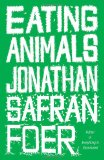Summary | Excerpt | Reading Guide | Reviews | Beyond the Book | Readalikes | Genres & Themes | Author Bio

Critics' Opinion:
Readers' Opinion:
First Published:
Nov 2009, 352 pages
Paperback:
Sep 2010, 368 pages
 Book Reviewed by:
Book Reviewed by:
Cindy Anderson
Buy This Book
George
I spent the first twenty-six years of my life disliking animals. I thought of them as bothersome, dirty, unapproachably foreign, frighteningly unpredictable, and plain old unnecessary. I had a particular lack of enthusiasm for dogs - inspired, in large part, by a related fear that I inherited from my mother, which she inherited from my grandmother. As a child I would agree to go over to friends' houses only if they confined their dogs in some other room. If a dog approached in the park, I'd become hysterical until my father hoisted me onto his shoulders. I didn't like watching television shows that featured dogs. I didn't understand - I disliked - people who got excited about dogs. It's possible that I even developed a subtle prejudice against the blind.
And then one day I became a person who loved dogs. I became a dog person.
George came very much out of the blue. My wife and I hadn't broached the subject of getting a dog, much less set about looking for one. (Why would we? I disliked dogs.) In this case, the first day of the rest of my life was a Saturday. Strolling down Seventh Avenue in our Brooklyn neighborhood, we came upon a tiny black puppy, asleep on the curb, curled into its ADOPT ME vest like a question mark. I don't believe in love at first sight or fate, but I loved that damned dog and it was meant to be. Even if I wouldn't touch it.
Suggesting we adopt the puppy might have been the most unpredictable thing I'd ever done, but here was a beautiful little animal, the sort that even a hard-hearted dog skeptic would find irresistible. Of course, people find beauty in things without wet noses, too. But there is something unique about the ways in which we fall in love with animals. Unwieldy dogs and minuscule dogs and long-haired and sleek dogs, snoring Saint Bernards, asthmatic pugs, unfolding shar-peis, and depressed-looking basset hounds - each with devoted fans. Bird-watchers spend frigid mornings scanning skies and scrub for the feathered objects of their fascination. Cat lovers display an intensity lacking - thank goodness - in most human relationships. Children's books are constellated with rabbits and mice and bears and caterpillars, not to mention spiders, crickets, and alligators. Nobody ever had a plush toy shaped like a rock, and when the most enthusiastic stamp collector refers to loving stamps, it is an altogether different kind of affection.
We took the puppy home. I hugged it - her - from across the room. Then, because it - she - gave me reason to think I wouldn't lose digits in the process, I graduated to feeding her from my palm. Then I let her lick my hand. And then I let her lick my face. And then I licked her face. And now I love all dogs and will live happily ever after.
Sixty-three percent of American households have at least one pet. This prevalence is most impressive because of its newness. Keeping companion animals became common only with the rise of the middle class and urbanization, perhaps because of the deprivation of other contact with animals, or simply because pets cost money and are therefore a signifier of extravagance (Americans spend $34 billion on their companion animals every year). Oxford historian Sir Keith Thomas, whose encyclopedic work Man and the Natural World is now considered a classic, argues that
the spread of pet-keeping among the urban middle classes in the early modern period is ... a development of genuine social, psychological, and indeed commercial importance. ... It also had intellectual implications. It encouraged the middle classes to form optimistic conclusions about animal intelligence; it gave rise to innumerable anecdotes about animal sagacity; it stimulated the notion that animals could have character and individual personality; and it created the psychological foundation for the view that some animals at least were entitled to moral consideration.
It wouldn't be right to say that my relationship with George has revealed to me the "sagacity" of animals. Beyond her most basic desires, I don't have the faintest clue what's going on in her head. (Although I have become convinced that much, beyond basic desires, is going on.) I'm surprised by her lack of intelligence as often as I'm surprised by her intelligence. The differences between us are always more present than the similarities.
From Eating Animals by Jonathan Safran Foer. Published by Little, Brown and Company. Used by permission of the publisher. All rights reserved.





The Funeral Cryer by Wenyan Lu
Debut novelist Wenyan Lu brings us this witty yet profound story about one woman's midlife reawakening in contemporary rural China.
Your guide toexceptional books
BookBrowse seeks out and recommends the best in contemporary fiction and nonfiction—books that not only engage and entertain but also deepen our understanding of ourselves and the world around us.